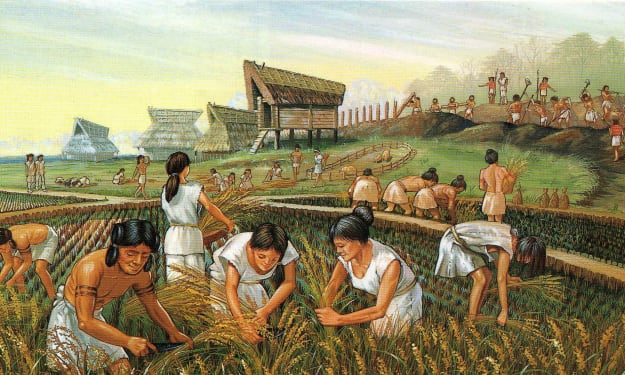How Egypt SUSTAINED Agriculture (Egyptian Shadoof)
History

The Egyptian shadoof stands as one of the earliest and most ingenious water-lifting devices in history, reflecting the ingenuity of ancient Egyptian engineering. This simple yet effective tool revolutionized irrigation practices along the Nile River, playing a crucial role in sustaining agriculture and supporting the growth of one of history's most iconic civilizations. This article delves into the origins, design, operation, agricultural impact, and enduring legacy of the Egyptian shadoof.
Origins and Historical Context
The shadoof, also known as a shaduf, emerged around 2000 BCE during the Middle Kingdom of ancient Egypt. The Nile River, with its annual flooding, was the lifeblood of Egyptian agriculture. However, to maximize the arable land and manage water more efficiently, Egyptians needed a reliable method to lift water from the river and distribute it to their fields.
The shadoof was likely inspired by earlier water-lifting techniques observed in Mesopotamia and other ancient cultures. Its adoption and refinement in Egypt highlight the adaptation and innovation of ancient Egyptian society in response to their unique environmental challenges.
Design and Operation
The design of the shadoof is a testament to the simplicity and effectiveness of ancient technology:
- Structure: The shadoof consists of a long, pivoting beam balanced on a vertical support. At one end of the beam is a counterweight, often made of stone or clay, and at the other end is a bucket or container.
- Mechanism: To operate the shadoof, the user lowers the bucket into the water by pulling down on the counterweight end. Once the bucket is filled, the counterweight helps lift the bucket, making it easier to pour the water into irrigation channels.
- Materials: The beam was typically made from wood, while the bucket was often crafted from leather or clay. The counterweight ensured that even a small person could operate the shadoof with ease.
Agricultural Impact
The introduction and widespread use of the shadoof had profound implications for Egyptian agriculture and society:
- Extended Irrigation: The shadoof enabled farmers to extend their irrigation efforts beyond the immediate floodplains of the Nile. This increased the amount of cultivable land and allowed for multiple harvests per year.
- Crop Diversity: With improved irrigation, Egyptians could grow a variety of crops, including wheat, barley, flax, and papyrus, leading to a more diverse and stable food supply.
- Labor Efficiency: The shadoof reduced the labor needed for water management, allowing agricultural workers to focus on other tasks, thus increasing overall productivity and efficiency.
Cultural and Social Significance
The shadoof was not just a practical tool; it also held cultural and social significance in ancient Egyptian society:
- Symbol of Innovation: The shadoof symbolized the ingenuity and adaptability of the Egyptians, showcasing their ability to harness natural resources to support their civilization.
- Depictions in Art: Shadoofs are frequently depicted in ancient Egyptian art and hieroglyphs, highlighting their importance in daily life and agricultural practices. These depictions provide valuable insights into the agricultural techniques and societal values of ancient Egypt.
- Community Collaboration: The construction and maintenance of irrigation systems, including the use of shadoofs, required communal effort and cooperation, reinforcing social cohesion and collective responsibility.
Enduring Legacy
The legacy of the Egyptian shadoof extends beyond antiquity, influencing subsequent water-lifting technologies and agricultural practices:
- Technological Influence: The principles of the shadoof influenced later water-lifting devices, such as the Archimedes' screw and the Persian wheel. Its basic design is still used in various forms in parts of the world today.
- Sustainable Practices: The shadoof exemplifies sustainable agricultural practices that relied on renewable resources and manual labor rather than mechanized technology, offering lessons in sustainability and resource management.
- Historical Insight: Archaeological findings and ancient texts referencing the shadoof provide historians and archaeologists with valuable information about ancient Egyptian technology, economy, and society.
Conclusion
The Egyptian shadoof stands as a remarkable example of ancient engineering and agricultural innovation. Its simple yet effective design revolutionized irrigation practices along the Nile River, contributing to the agricultural prosperity and societal development of ancient Egypt. As a symbol of ingenuity and sustainability, the shadoof continues to inspire admiration for the resourcefulness of ancient civilizations and offers timeless lessons in water management and environmental adaptation. Through its enduring legacy, the shadoof reminds us of the profound impact that innovative technology can have on human society and its relationship with the natural world.
About the Creator
Marveline Merab
“History never repeats itself. Man always does.”
― Voltaire
Enjoyed the story? Support the Creator.
Subscribe for free to receive all their stories in your feed. You could also pledge your support or give them a one-off tip, letting them know you appreciate their work.






Comments
There are no comments for this story
Be the first to respond and start the conversation.